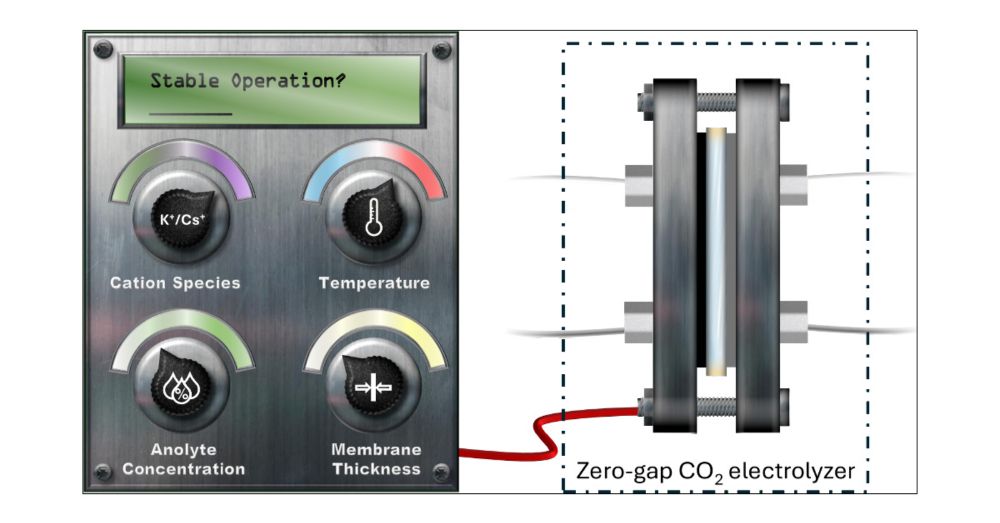
@Penn_State alum, Decarbonize Catalysis and Separations for 🌾,💧, &⚡️(she/her)
https://www.circular-electrochemistry-lab.com/
Lots of great discussions on manufacturing for low cost and clean energy production.
A very nice team!

Lots of great discussions on manufacturing for low cost and clean energy production.
A very nice team!
Comparing Intrinsic Catalytic Activity and Practical Performance of Ni- and Pt-Based Alkaline Anion Exchange Membrane Water Electrolyzer Cathodes | ACS Energy Letters pubs.acs.org/doi/10.1021/...

Comparing Intrinsic Catalytic Activity and Practical Performance of Ni- and Pt-Based Alkaline Anion Exchange Membrane Water Electrolyzer Cathodes | ACS Energy Letters pubs.acs.org/doi/10.1021/...
CO2 Capture via Electrochemical pH-Mediated Systems | ACS Energy Letters pubs.acs.org/doi/10.1021/...

CO2 Capture via Electrochemical pH-Mediated Systems | ACS Energy Letters pubs.acs.org/doi/10.1021/...
Filament-Induced Failure in Lithium-Reservoir-Free Solid-State Batteries | ACS Energy Letters pubs.acs.org/doi/10.1021/...

Filament-Induced Failure in Lithium-Reservoir-Free Solid-State Batteries | ACS Energy Letters pubs.acs.org/doi/10.1021/...

Mostly logistical stuff, but interesting to see that merit criteria staying put and panels are ongoing.

Mostly logistical stuff, but interesting to see that merit criteria staying put and panels are ongoing.
Comparing Advanced Bipolar Membranes for High-Current Electrodialysis and Membrane Electrolysis | ACS Energy Letters pubs.acs.org/doi/10.1021/...

Comparing Advanced Bipolar Membranes for High-Current Electrodialysis and Membrane Electrolysis | ACS Energy Letters pubs.acs.org/doi/10.1021/...

bit.ly/40ELYcL

bit.ly/40ELYcL
Read more:
bit.ly/40kARUV
#energysky

Read more:
bit.ly/40kARUV
#energysky



Electrothermal Carbon Capture and Utilization─A Review | ACS Energy Letters pubs.acs.org/doi/10.1021/...

Electrothermal Carbon Capture and Utilization─A Review | ACS Energy Letters pubs.acs.org/doi/10.1021/...
pubs.acs.org/doi/full/10....

pubs.acs.org/doi/full/10....


secatsoc.wordpress.com/registration

secatsoc.wordpress.com/registration


